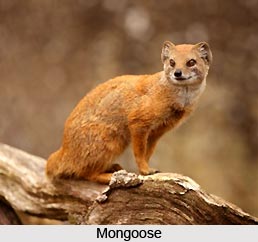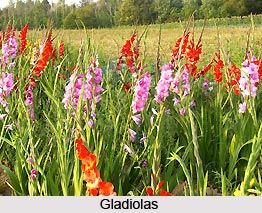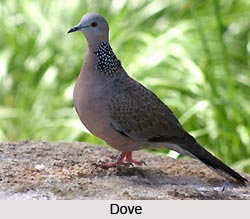Indian Flora and Fauna of the Northern Zone are the representation of richness of the natural resources of India. Tremendous variety of plants is found in different states of northern India which constitutes various types of forests including Deciduous Forests, temperate forests, tropical thorny forests, evergreen forest and many more. Forests of northern zone also house a number of plants having medicinal as well as commercial values. Variation of flora and climatic conditions of this region has also contributed in the diversification of fauna. An array of fauna is hosted by this region which includes reptiles, amphibians, mammals etc. The variety of Indian flora and fauna is far greater than the varieties of any other parts of the world.
 Flora and Fauna of Punjab
Flora and Fauna of Punjab
Shivalik hills of the state shows the highest diversity of flora and fauna whereas the plains have abundance of bushes, shrubs and grasses. The rich variety of flora includes around 70 species of trees, 335 species of herbs, 70 species of shrubs, 21 varieties of twiners and 19 species of climbers. The most cultivated tree of this area is mango. Other common flora of Punjab includes orange, apple, fig, pomegranate, peach, mulberry, almond, quince, apricot and plum. Biodiversity of the state can also be witnessed among the fauna of the state which comprises of 396 species of birds, 55 species of fish, 19 species of mammals and 20 species of reptiles. A number of wetlands, zoological parks, and wildlife and bird sanctuaries host numerous variety of animals including crocodiles, camel, buffaloes, horses, otter, wild boar, hog deer, flying fox, squirrels, mongoose, fruitbat, wildcat etc. Poisonous snakes like sangehur and cobra also common in the state which are extremely fatal to mankind. Bees and silkworms are extensively reared in Punjab. Baz (Eastern Goshawk) is recognized as the state bird, black buck as the state animal and shisham as the state tree of Punjab.
 Flora and Fauna of Haryana
Flora and Fauna of Haryana
Flora of Haryana is mostly dominated by dry, thorny, deciduous forest and thorny shrubs. However grasses cover the hills of Haryana during monsoon. Common species of flora include eucalyptus, mulberry, kikar, pine, babul and shisham. Diversity of fauna in the state is also considerable. Over 300 varieties of birds are found in the state. Apart from this other members of fauna include black buck, panther, nilgai, mongoose, fox, wild dog, jackal etc.
Flora and Fauna of Uttar Pradesh
Abundant variety of flora and fauna is found in the state of Uttar Pradesh. About 6.88 percent of the total geographical area of the state is under forest cover. Temperate forests of the upper mountains comprise of a variety of reptiles, insects, mammals. A number of medicinal plants are also found in the forest as well as plantations. Along the river banks, deciduous trees grow in the upper Gangetic plain. Ganga River and its tributaries house numerous amphibians, small reptiles, crabs and fresh water fishes. The plains of the state are covered by tropical dry deciduous forests with abundant growth of grasses and shrubs. Tropical thorny forests of Punjab include a large number of thorny trees, especially babul. Fauna of Punjab also exhibits a huge variety such as lizards, kraits, cobras, lion, rhinoceros etc. Among the different species of fishes, trout and mahaseer are the most common ones. A plethora of birds are also common in the state that includes peacock, doves, black partridges, jungle fowl, house sparrows, blue jays, songbirds, comb ducks, woodpeckers and many more.
 Flora and Fauna of Himachal Pradesh
Flora and Fauna of Himachal Pradesh
About 66.52 percent of the geographical area of the state is under forest cover. The climatic conditions of the state support a variety of vegetation including tropical and subtropical dry broadleaf forests, tropical and subtropical moist broadleaf forests, thorn scrub forest, deciduous forest, subtropical pine forests, evergreen forest etc. Being the fruit bowl of the country the state houses a number of orchards. Flowers of Himachal Pradesh include gladiolas, marigolds, carnations, rose, chrysanthemums, lilies and tulips. Fauna of Himachal Pradesh also exhibits a great variety and enlist 359 species of animals and 1200 variety of birds. A number of wildlife sanctuaries and national parks shelter animals like leopard, snow leopard etc.
Flora and Fauna of Jammu and Kashmir
Jammu and Kashmir is renowned for its picturesque natural beauty and is also known as `Paradise on Earth`. Varied flora of the state comprises of dense deodar, walnut, almond, willow, cider etc. The enchanting colours of the trees change with the changing seasons. Chinar is a famous Kashmiri tree which is prevalent throughout the valley and is recognized for its alluring beauty. The climate of this region supports the survival of a vast variety of fauna such as Snow Leopard, wolf, Ibex, Musk deer, Black bear, wagtails, warblers, doves, partridge, herons and many more. Fauna of Ladakh region enlist yak, Tibetan antelope, red bear, wild ass, gazelle etc.
Flora and Fauna of Uttarakhand
Uttarakhand is also considered as a rich storehouse of flora and fauna. Forests cover 65 percent of the total area of the state. Renowned wildlife sanctuaries and national parks such as Jim Corbett National Park, Valley of Flowers National Park, Nanda Devi National Park, Govind Pashu Vihar National Park and Sanctuary etc serve as the home for a plethora of flora and fauna of this region. Fauna of the state constitutes leopards, jungle cat, leopard cat, black bears, otters, Indian grey mongooses, Indian pangolins, Marsh crocodiles etc. A huge variety of birds and butterflies are also prevalent in Uttarakhand like red Helen, pale wanderer, Great Slaty Woodpecker, Orange-breasted Green Pigeon and Tawny-bellied Babbler. Varied species of flora in Uttarkhand enlist the names of rhododendrons, evergreen oak, silk cotton tree etc. 520 species of higher plants are found in the state out of which 498 are flowering plants.
Flora and Fauna of Rajasthan
Flora and Fauna of Rajasthan are unique in its own way. The combination of Thar desert and the forests of Aravali range render a great biodiversity to the state. The forest cover of Rajasthan is about 9 percent of the geographical area. The vegetation of dessert region includes mainly thorny shrubs, grasses and stunted trees which mostly grow during the monsoon. Significant plants of Rajasthan are bamboo, pipal, salar, jamun, dates, wild rose, orchids and ferns. Fauna of the state ranges from the variety of colourful birds to reptiles and mammals. Common animals found in this region are sambhar, rhesus macaque, jackal, Indian porcupine, wolf, desert fox, five-striped palm squirrel, wild boar etc. Rajasthan is also well known for cats. The climate and vegetation of this region thus supports diverse flora and fauna.
Some of the varieties of flora and fauna are exclusive of the forests of northern region whereas certain endangered varieties have also been well preserved in this region. These rich resources of the country can be well explored in the wildlife sanctuaries and national parks situated in this zone. Tourism of the country is greatly enhanced by the diversity of flora and fauna found in the northern zone that attracts tourists from all around the globe.











